Guitar tone is one of the most discussed topics in the guitar world. Having a great guitar tone can make a huge difference to how you sound as a guitarist. In this ultimate guide we’ll tell you everything you need to know about guitar tone.
Over 250,000 guitar-learners get our world-class guitar tips & tutorials sent straight to their inbox: Click here to join them
In this free lesson you will learn:
- How to dial in your dream guitar tone.
- 10 essential tone tips that will make you sound amazing.
- The number 1 tone secret that will transform the sound of your guitar.
What Do We Mean When We Say “Guitar Tone”?
The term “guitar tone” relates to the sound of the instrument, either by itself or with amplification and effects.
- When we talk about the tone of someone’s guitar, we are not referring to the way they play, but rather the way that they sound while playing.
- Guitar tone is shaped by a wide variety of elements.
Everything from your strings and pick selection to your amplifier, pedals and (some would say) even the wood of your guitar all have an impact on your tone.

We’re going to dive deep today and investigate the elements that shape the sound of our guitar.
- By the end of this article, you’ll have a better understanding of how to embark on your “tone journey.”
- We’re going to set you up to chase that perfect sound you’ve been hearing in your head for years.
Grab your favorite axe, flip the switch on your amp and fire up the pedalboards – we’re about to make some noise.
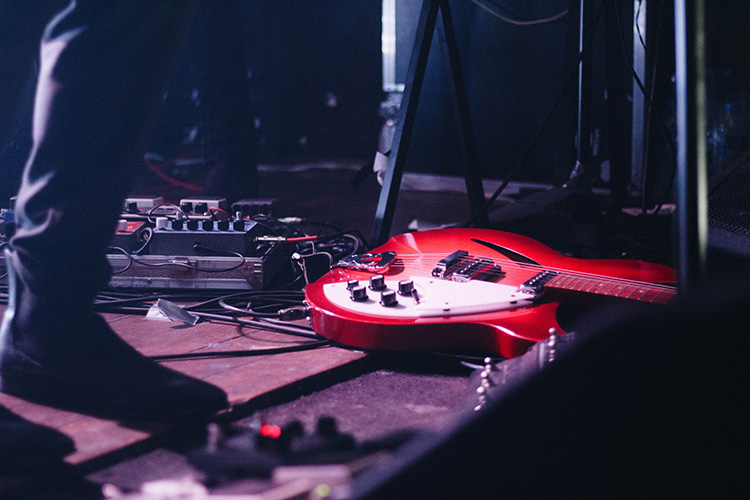
What Defines “Good Guitar Tone?”
Before we dive in, let’s quickly settle an internet debate before it breaks out:
- Good guitar tone is completely subjective.
- This means that what sounds amazing to one guitarist, might sound terrible to another.
- We’re going to look at how to construct guitar tone, and let you decide what sounds good to your ears.
Not everyone will agree with what you think sounds great, and that’s okay!
Stick to chasing the sounds in your head and you’ll (mostly) always be happy with the results.
There are a few key principles that we can follow when chasing down a good guitar tone.
Let’s have a look below.
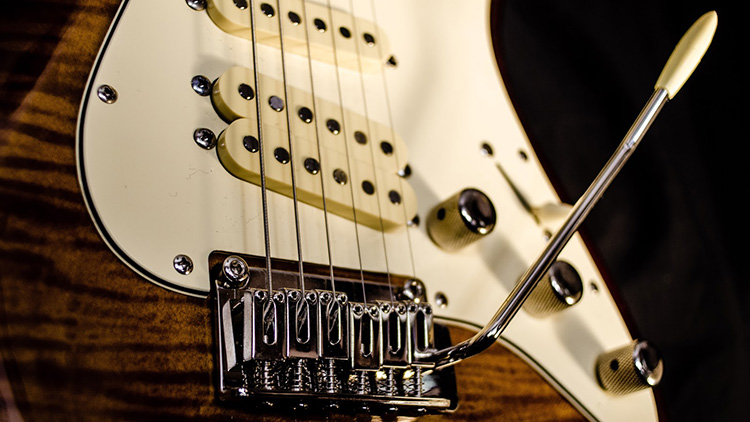
Have you ever adjusted the sound settings on a car radio? Ever notice how the sound is broken down into Bass, Middle & Treble?
Guitar tone can be broken down the same way.
Bass: Lowest portion of the sound spectrum. Provides boomy sound. You don’t want to crank this knob too hard. When adjusting, hit the low E and A strings to hear it best.
Middle: Responsible for the body of the sound, as the guitar is a mid-to-high range instrument.
When adjusting, hit the D and G string open to hear it best.
Treble: Higher end of the frequency spectrum. Adds a sharpness and brightness to our tone.
When adjusting, hit the B and High E strings to hear it best.
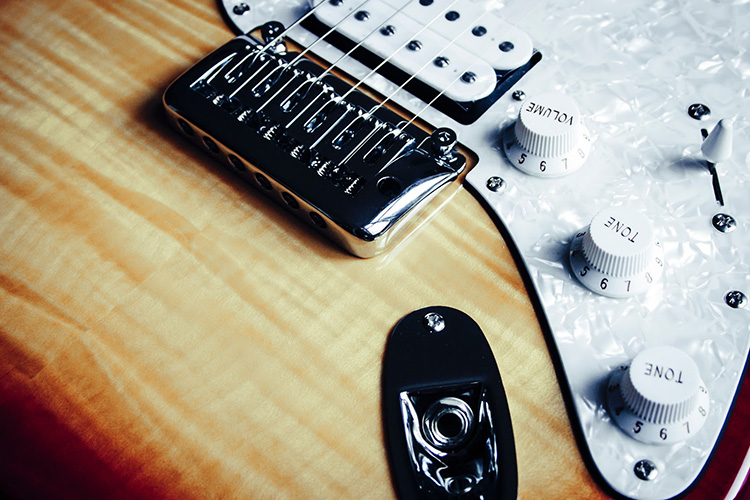
When shaping our tone, we should always strive for clarity first.
- Creating a clear tone means that we’ll be able to hear ourselves better overall.
- There are a thousand different words that guitarists will use to describe tone, and it’s good to get familiar with a few of them.
If you’re a beginner guitarist, it’s good to have a vocabulary to express yourself with. If you’re a studio musician, it’s a necessity.
“Muddy” = a tone with too much bass.
“Bright” = a tone with a lot of treble, sometimes too much
“Thick” = a tone with a well-crafted midrange and bass
“Thin” = a tone with not enough definition to it.
“Fuzzy” = a tone with a lot of distortion, potentially affecting the clarity of it.
To break things down, let’s start where everything else starts.
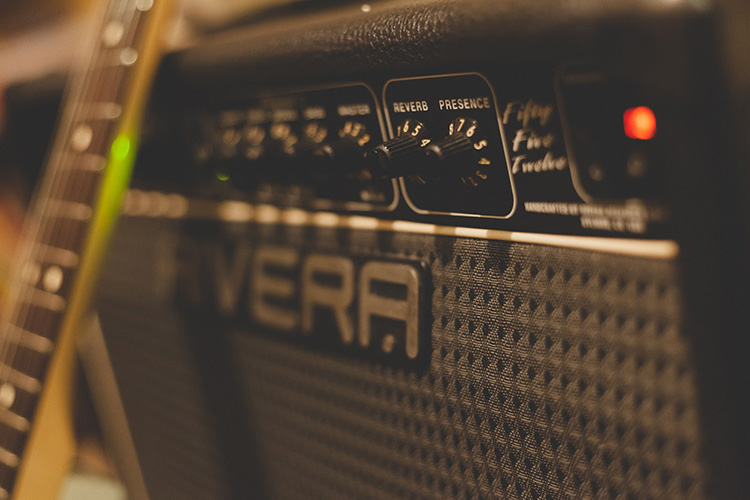
Learn 12 EASY beginner chords with our popular guide

✅ Stop struggling. Start making music.
✅ Learn beginner-friendly versions of every chord.
This is our most popular guide and it will improve your chord ability quickly! 😎
Get your own personalised guitar-learning plan 🎸
Get a custom guitar-learning plan here: Click here for GuitarMetrics™
World-Class Guitar Courses 🌎
Learn from the world's best guitar educators: Click here for our guitar courses
Guitar Tone – Your Hands & Pick
Many guitarists can easily forget that before amps and effects and fancy guitars, our hands and pick are where our tone begins.
- It’s important to be able to articulate ourselves well when playing guitar, and this helps develop a clear guitar tone.
- The tone from your hands is crafted over time and through effective practice, so make sure you’ve got your practice journal handy at all times.
Practice slow and focus on letting every note that you play ring clearly. This helps us develop good habits, and we’ll sound better wherever we play!
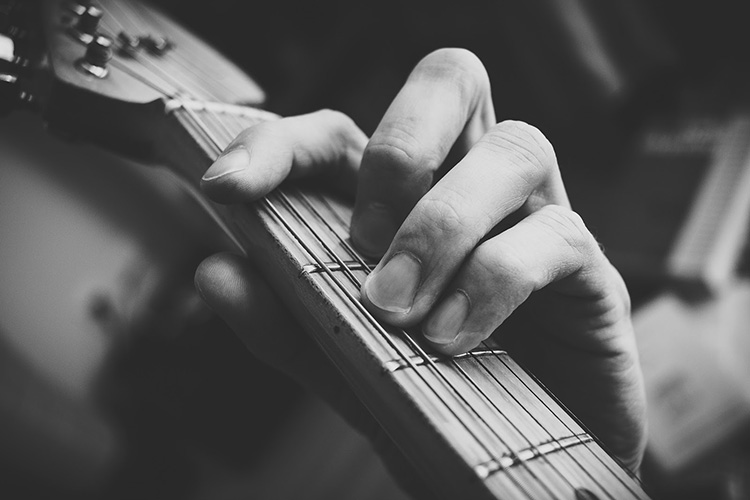
Our pick selection also has a lot to do with our guitar tone.
- Guitar picks are very much a matter of personal preference, and it’s important to try as many as possible to find your favourite.
- Don’t feel pressured to make a decision on what your preference is right away – many guitarists will take years to settle on a preferred guitar pick.
How we hold our pick makes a huge difference as well – More on that here!
Writer’s Pick: Personally, we recommend Jim Dunlop Nylon 1mm picks because of their sharpness and stability.
These picks aren’t too heavy or bulky in the hand, which makes for better mobility when playing (and better for guitarists who are still early on in their journey.)
Want to try them for yourself?
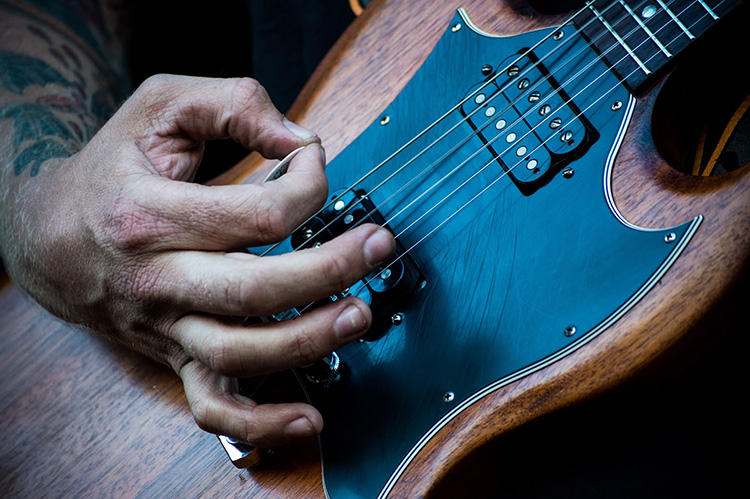
Guitar Tone – Guitars
Obviously, our guitar itself is going to have a say in how we sound.
- There are things about a guitar’s tone that we can change, and some things that we cannot.
- For example, we cannot swap out the wood of a guitar, but we can swap the hardware (bridge, tuners, nut).
Becoming familiar with the parts of the guitar (especially with electric guitars) can help us ensure that we are always using hardware that keeps our guitar stable and in tune.

- Where acoustic guitars are concerned, there is less to swap that will make a massive difference.
- Strings and the body of the acoustic itself are two of the biggest contributors to acoustic guitar tone.
- We should always purchase guitars that sound good from the time we try them.
This helps us avoid doing massive upgrades to our instruments that can cost a significant amount of money.
Our tone and volume knobs on our guitar play a big role in our guitar tone as well. A lower volume will force us to dig in harder, leading to some cool new sounds.
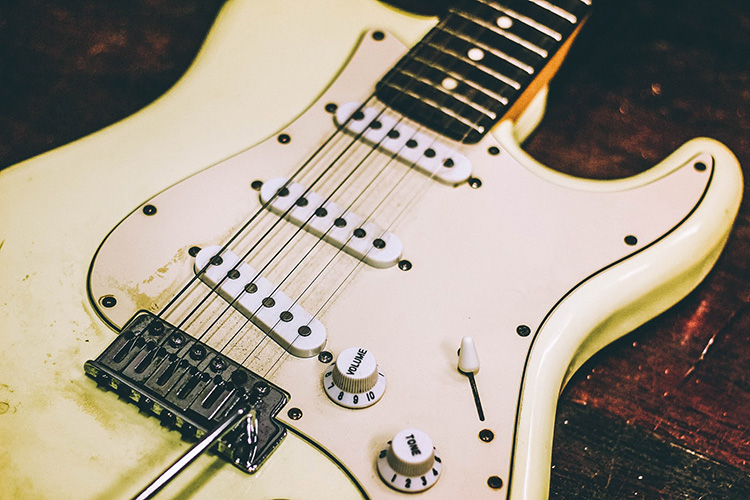
Rolling your tone knob off will leave the guitar feeling bass-heavy yet thin.
Turning it up will increase the guitar’s note definition and expression.
One of the most swappable elements of tone in (almost) any guitar is the pickups.
Let’s discuss below.
Guitar Tone – Pickups
A unique part of many ‘electrified’ musical instruments, pickups are magnetic transducers that “pick-up” the sound of your playing and transmit it to an external source like an amp or a PA system.
- Pickups come in all shapes and sizes and can be made for all styles of guitar (acoustic, electric, classical/nylon string).
- For acoustic and classical guitarists, a variety of magnet and microphone-based pickup systems are available as well.
LR Baggs make pickup systems specifically designed for acoustic guitars at a variety of price points, so check them out.
For the electric guitar player, the guitar tone options provided by pickups are endless.
Electric guitar pickups are divided into three main categories:

Guitar Tone – The Single-Coil Pickup
- Uses a single magnet and are most often seen on Fender Stratocaster-style guitars.
- Used in a variety of different genres of music, but do not handle high levels of distortion well without humming.
Guitar Tone – The Humbucker Pickup
- Designed as an answer to the hum of the single coil pickup.
- Humbuckers are essentially two single-coil pickups working together. Often used in rock and metal music due to their ability to handle distortion better than single-coils
Guitar Tone – The P-90 Pickup
- Contains a higher output than a single-coil pickup, and less than a humbucker.
- P-90s are the middle ground between the two main styles of pickup mentioned above. Great for country, jazz and pop music!

Pickup Pro Tip: The UK-based pickup masters at Bareknuckle Pickups have a page on their site where you can listen to the differences in the sound of their pickups. Check it out here.
Can you hear the difference?
Guitar Tone – Guitar Strings
One of the easiest aspects of our tone that we can adjust is the type of guitar string we use.
- There are a ton of different companies that each offer their own flavour of guitar string, so it’s important to try a few different types along your guitar journey.
- Guitar strings come in different sizes or ‘gauges.’ These are important to pay attention to.
If you don’t know off-hand what size strings your guitar uses, consider taking it to a guitar shop for a professional opinion.
Thinner gauge guitar strings will give us a naturally thinner guitar tone, while thicker strings will add a boominess to our sound.
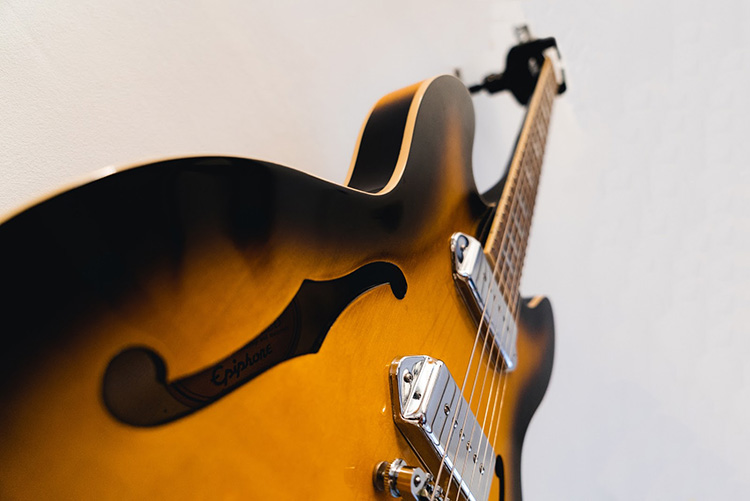
Pro Tone Tip: As important as it is to try a variety of different guitar strings, try and stick to one general gauge of guitar string as much as you can.
- Swapping a set of light gauge strings for a heavy-gauge set can put excess stress on the neck of our guitar.
- If you want to swap for a heavier or lighter gauge than what you have now, it’s always worth consulting a local guitar tech.
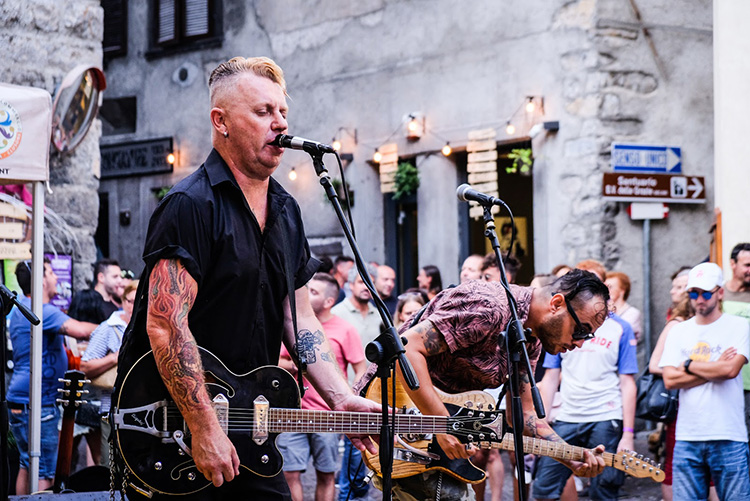
Guitar Tone – Amplifiers
The perfect guitar tone in our heads can be a long journey, but a good amplifier is a great place to start.
Finding the right amplifier takes time and patience, so don’t be upset if nothing jumps out at you right away.
These days, amps come with a variety of different options and functions.
Amplifiers can be divided into four categories:
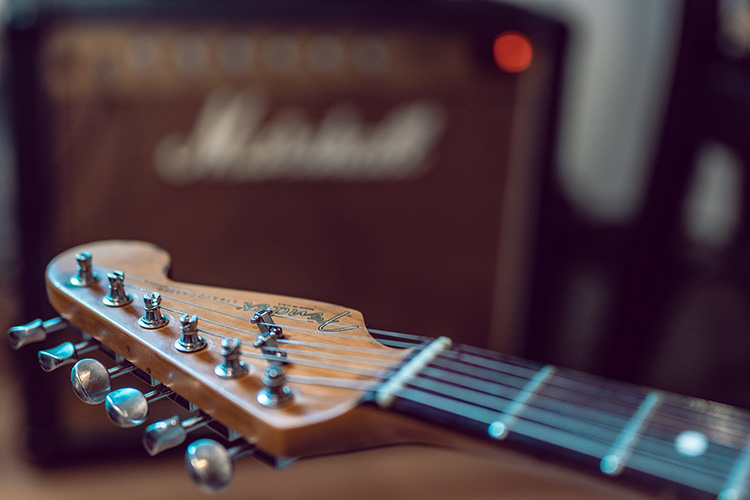
Solid State Amplifiers
Primarily uses transistors in the preamp and power sections of the amp.
These amps don’t often need repairs, as the parts do not quickly deteriorate.
Extremely reliable and usually come with clean and distorted channels.
Tube Amplifiers
The choice of many guitarists for their warm and rich tone, tube amps provide their own unique feel.
These amps perform extremely well, but the tubes that power the amp can deteriorate and break over time.
A superior guitar tone for sure, but at the cost of occasional repairs.
Modelling Amplifiers
Available in amplifier and (recently) pedalboard format, amp modellers contain multiple styles of sound within one unit.
Many sounds are modelled after famous amplifiers and provide a great basis for you to experiment with guitar tone.
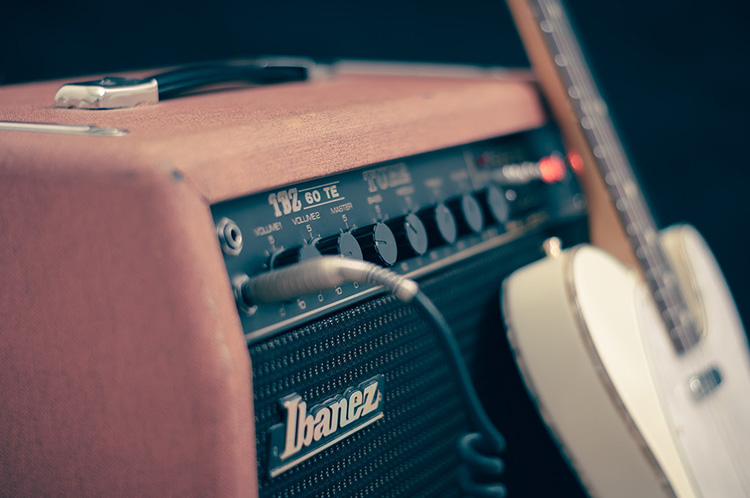
Hybrid Amplifiers
Combining some of the best parts of the amps listed above in one package. This amp style can yield better guitar tone than a solid state amp due to its use of tubes.
When trying out a new amplifier, it’s important to play with the settings as much as possible.
In addition to Bass, Mids and Treble, most amps have a Gain setting which is responsible for the amount of distortion being applied to the signal.
Recommendation: We’re HUGE fans of everything the BOSS Katana delivers on. It’s a versatile amp that’s suitable for players of all skill levels, and comes equipped with a wide arsenal of guitar tones and recording capabilities. It also plays extremely well with guitar pedals.
We highly recommend this amp for our readers who are searching for the right guitar amplifier.
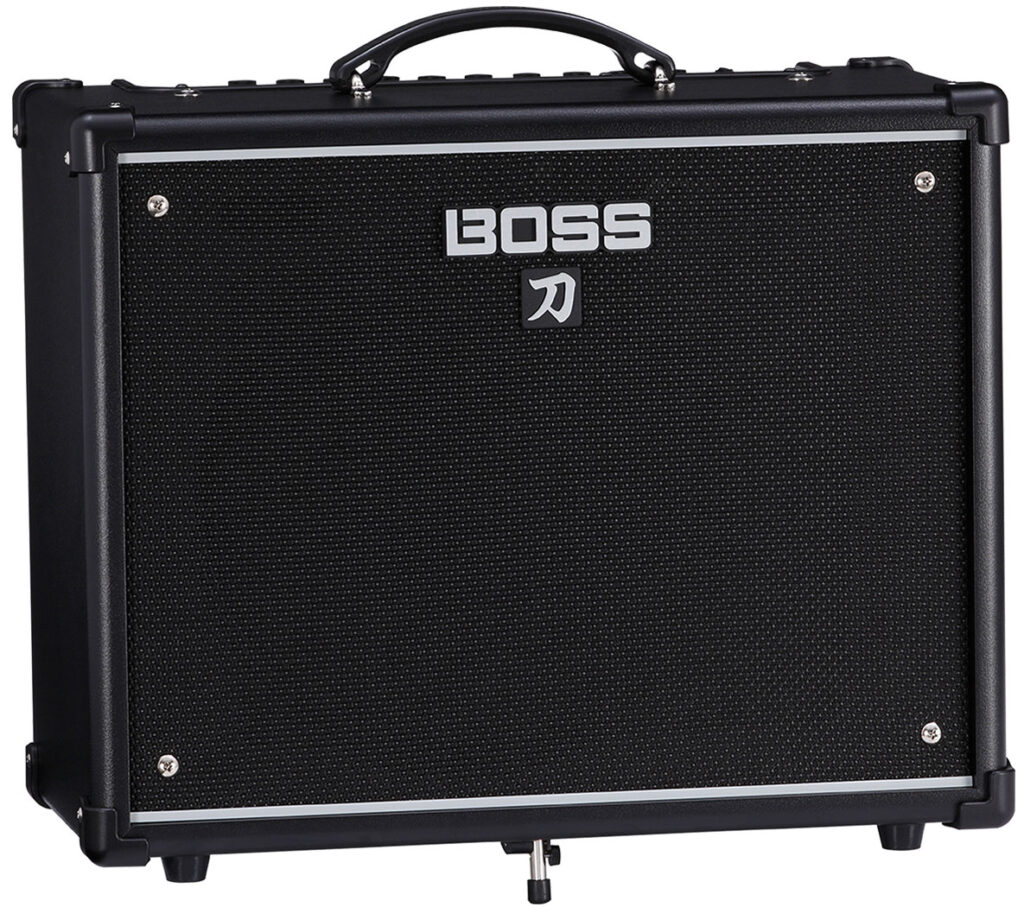
Pedals & Effects (& Recommendations)
One of the biggest points of conversation in the guitar tone world, adding pedals to your setup can alter your tone completely – and often for the better. Not to mention, the pedal world is massive.
- The best part about pedals is that they operate externally from your amp, which makes them easier to trigger off and on.
- We often refer to most pedals as stompboxes because of their footswitches.
We’ve broken down a few essential types of effects below:
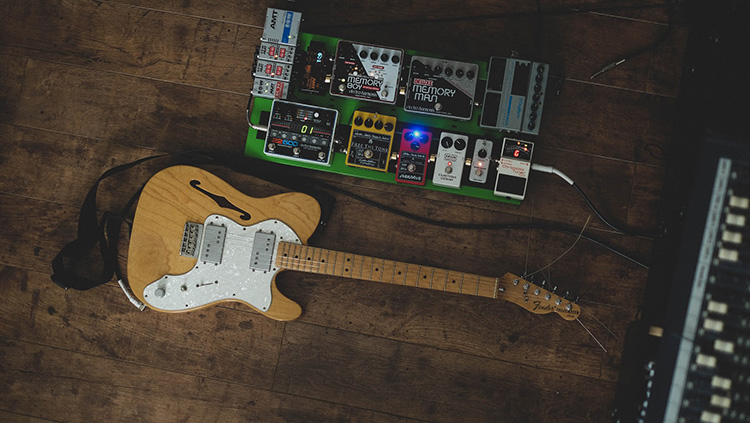
Distortion
Adds a separate layer of distortion or fuzz to your signal. Straightforward.
Examples: BOSS DS-1
Chorus
The chorus effect occurs naturally in choirs, where multiple singers are singing in the approximate same time and pitch. Great for use over clean guitar tones for a shimmery sound.
Example: Behringer UC200 Ultra Chorus
Flanger
An effect that doubles your guitar signal and plays it back slightly out of phase. This effect is great for creepy atmospheres.
Example: Dunlop MXR Micro Flanger
Delay
An echo effect that can be set to different time values.
Example: BOSS DD3T
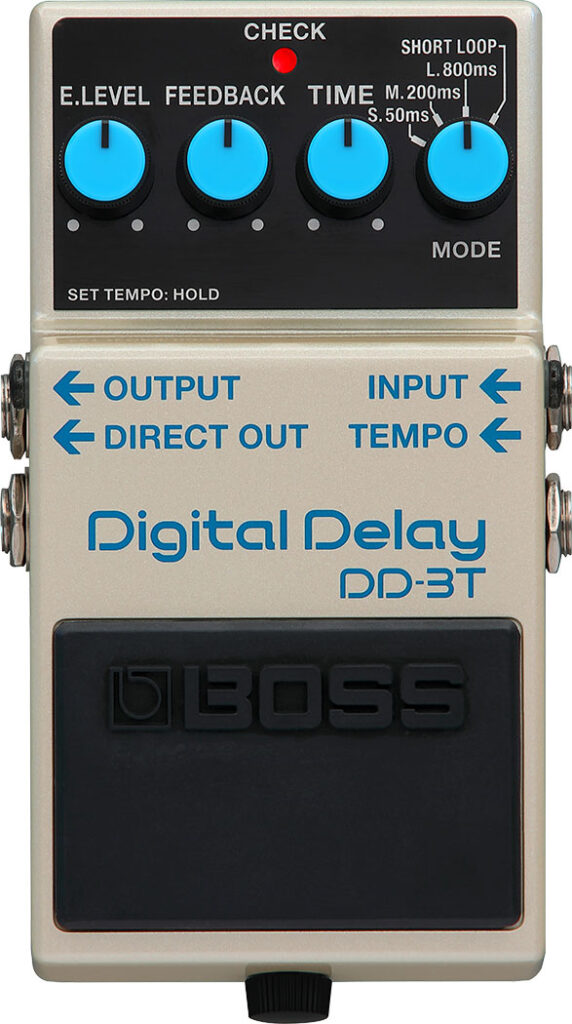
Reverb
An effect that creates a splash of atmosphere underneath our guitar. Made to simulate old spring-loaded reverb tanks inside amplifiers, as well as different types of rooms.
Example: TC Electronic Hall Of Fame 2
Volume
A pedal designed to adjust the volume of our guitar from the floor. Some come equipped with a gain setting to adjust distortion.
Example: Ernie Ball MVP
Compressor
Designed to boost the guitar signal evenly. Compressors help in crafting a clear and expressive lead guitar tone.
Example: Keeley Compressor Plus
Check out this beginner guide to guitar effects on Youtube courtesy of PMTVUK.
Check out this video from Rob Chapman and Anderton’s Music on building a pedalboard on a budget!
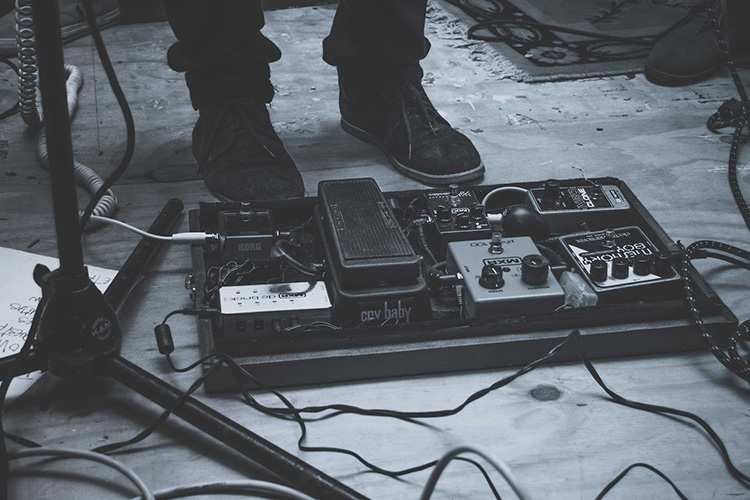
Download our lead guitar cheat-sheet to make things easier
It's hard to understand which scales work with which keys.
So we created a cheat-sheet! A key and scale-finder that you can use again and again.

Get your personalised guitar-learning plan 🎸
Get a custom guitar-learning plan here: Click here for GuitarMetrics™
World-Class Guitar Courses 🌎
Learn from the world's best guitar educators: Click here for our guitar courses
A Brief Last Note For Your Guitar Tone Journey
Don’t forget about cables!
- An often-overlooked component of guitar tone, cables are what transmit our signal throughout our gear.
- Having a solid and reliable set of cables is a worthwhile investment for every guitar player.
Besides, there’s nothing worse than trying to look for a dead cable inside a massive pedalboard!
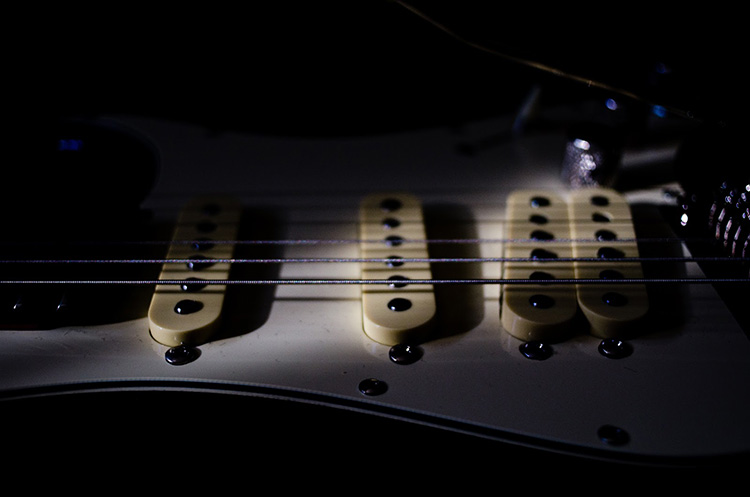
Your guitar tone quest will take you down roads of sound you never dreamed of, and you will learn a lot about your gear in the process of crafting the ideal tone.
Don’t forget to experiment with every aspect of your gear. Sometimes a new world of tone is only one knob-turn away, so use your imagination.
Don’t be afraid to experiment with different pedal combinations to find the sound that’s right for you.
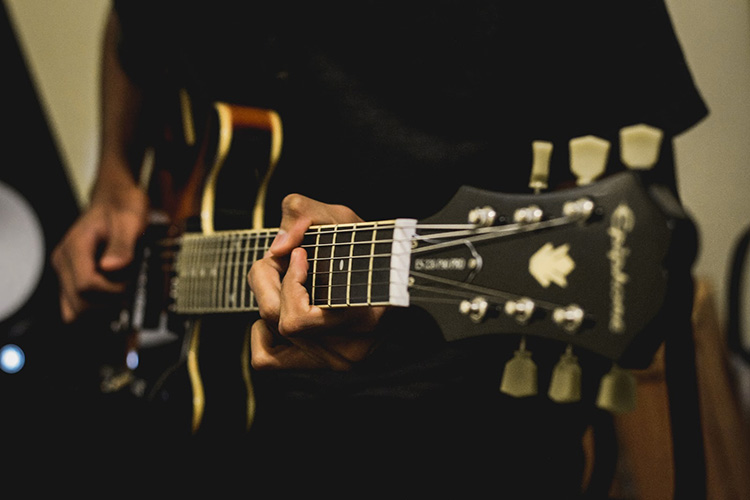
Where do I go from here?
Want to keep learning how to shape your guitar tone?
- Head to your local guitar shop and try out some different effects pedals through any amp.
- Sit down with your amplifier and learn how to dial your tone to your likeness.
- Listen to albums of your favorite artists, and listen for their tone. What do you like about it?
- Rent a multi-effects unit or an amp modeller (Line 6 Helix, Kemper, Axe FX) and try it out for yourself
- Head out to a local show and check out what the guitarists on stage are playing through!
Recommended Resources
If you want to keep learning, check out some of our other free guitar lessons below:
- How To Read Guitar Tabs
- Notes on the Guitar: Unlocking the Fretboard
- Best Way to Learn Guitar (3 Step Method)
- Palm Muting: An Essential Guide
- Rhythm Guitar Lessons
What Type of Guitarist Are You?
Take our 60-second quiz & get your results: Take The Quiz
Join the world's best online guitar school 🌎
- Get your own personalised guitar learning plan (customised just for YOU).
- World-class online guitar courses. Learn at your own pace.
- Community Campus & Learning Forum - A friendly community! Connect with our team & students. 😊
- Beginner Song library with chordsheets, tabs and tips. (Songs suitable for all levels!)
- Regular live streams, seminars and Q&A sessions - Learn from world-class guitar educators. Get all your questions answered!
Click here to learn more about National Guitar Academy membership 
Cool Guitar T-shirts 😎
Look cooler! Check out our merch: Click here to see our merch store
Want free guitar tips and video lessons delivered to your inbox?
Join over 250,000 other guitar learners and subscribe to our guitar-tips-by-email service. (It's free.)
We'll send you a series of lessons that will move you to the next level of your guitar journey.
Learn how everything fits together quickly, easily and effectively. We share ninja tips (for instant fun!) but also timeless fundamentals that will deepen your understanding.

Popular Lessons
How To Learn Guitar: An 11-Step Programme For Beginners
How To Choose The Perfect Beginner Guitar
More Cool Guitar Stuff
Learn about National Guitar Academy: About Us
Visit our YouTube channel for fun guitar videos.
Join us on Facebook for daily guitar tips.
Listen to our Learn Guitar Podcast for rapid guitar progress.
Check out our free chord lessons.
Get our best guitar tips & videos
Where should we send it?
Where should we send it?
Get our best guitar tips & videos


